Make your own
Loop End Strings
© Frank Ford, 1/12/00; Photos by FF, 1/12/00
Lots of instruments, including most banjos and mandolins, use steel strings with
loop ends. Unfortunately, not all music shops have a full selection of individual
loop end replacement strings. If you have difficulty finding the appropriate gauge
or type of loop end string, you can make your own by removing the ball from a ball
end string. After, all a loop end string is the same as a ball end one, except that
there's a brass cylinder (not really a "ball") held in the loop.
You can also twist a loop in the string, either by hand or by "machine."
Twisting loops by hand is a little rough on the fingertips, but it certainly does
work.
Here's a slick little old-time tool:
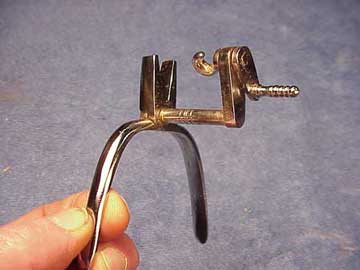
It's about as simple as it can be - a pair of pliers with an attached hook and crank.
To make a nice loop end on my string, all I have to do is clamp the string in the
jaws of the pliers, and crank up the string:
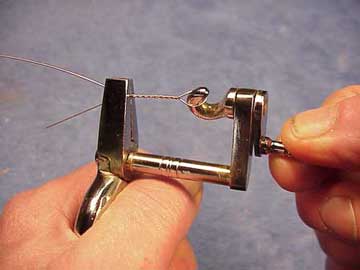
After trimming the loose bit of the string, I have a perfect loop end:
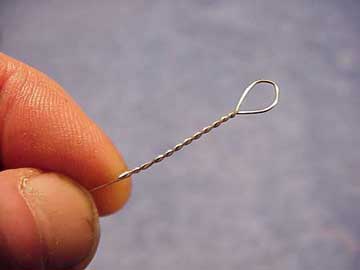
In case you're wondering, I bought this nifty tool for $60.00 from Ron Fernandez,
of Fernandez Music (www.fernandezmusic.com).
|

|
This is Ron, playing a Portuguese guitarra, which uses special
strings with loops formed on both ends. The little string winding tool is a virtual
necessity if you have an instrument like his! |
If you have a ball end string and need a loop end, you can simply remove the brass
ball from the loop at the end of the string. The trick is to do it safely, without
nicking or kinking the string at the loop.
For an unwound string, you can grip the twisted portion, and untwist it just enough
so that the ball drops out. Some makers solder the twisted portion, and some brands
of strings break at the first twist when you try this trick, though.
Also, most wound strings are overwrapped right up to the ball, so the loop can't
be untwisted.
The safest way to remove the brass ball is to "bite" it with a pair of
wire cutters, chipping the brass.
Here, I have my cutters positioned to chip the brass without touching the steel wire:

After three quick bites, I have a chip broken out, and one still hanging on:
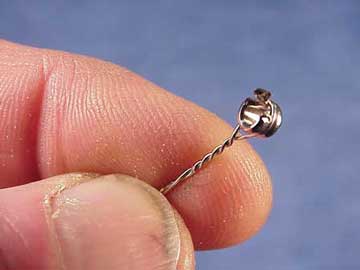
A fourth bite, and about two thirds of of the brass is missing from one side:
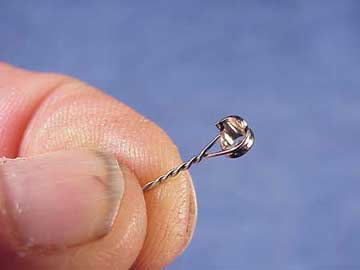
All I have to do is turn the brass ball, and it drops right out.
The "before" and "after"

It couldn't be simpler!
Back to Index Page







